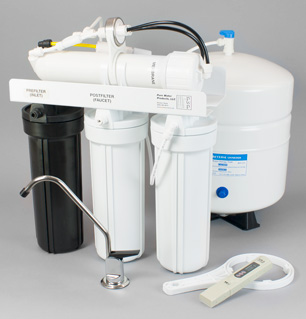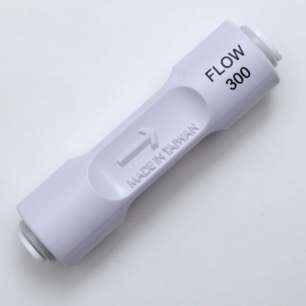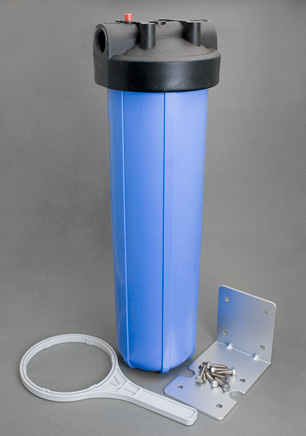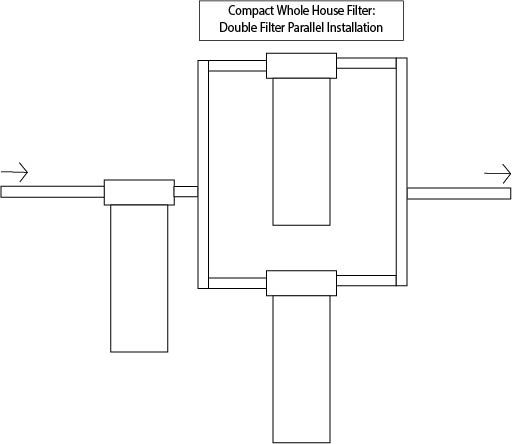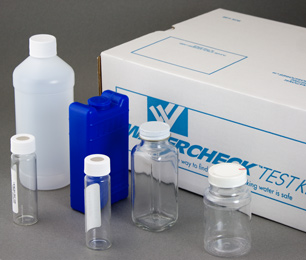Pure Water Occasional. July, 2025
|
In this mid-summer Occasional you'll hear much about lead and how to get rid of it, the different materials used to make filter carbon, the taste of water, the growing problem of ageing pipes, how to test your RO's flow restrictor, the dilemma of wet wipes, historic droughts and historic flooding, beach closings, ageing dams, toxic algae blooms, and, as always, there is much, much more.
Thank you for reading, and sincere thanks from Pure Water Products for your continuing support. |
|
Thanks for reading!
Please visit the Pure Water Gazette, where you will find hundreds of articles about water and water treatment, and the Pure Water Products main website, where there is much information about water treatment and specific information about the products we offer. On both of these information-rich sites, pop-up ads and other distractions are not allowed.
|
Pure Water Gazette Technical Wizard Pure Water Annie Answers All the Persistent Questions about Water Treatment.

Pure Water Gazette tech wizard Pure Water Annie tells you how to protect your drinking water from lead.
The most common advice for removing lead from drinking water tells you to remove the source of lead. This is excellent advice, but unfortunately home owners have no control over lead entering the home from external sources.
Lead most often comes from piping. If the water supplier still has lead pipes in service, or if your home has old copper pipes with lead solder joints, that is probably your source of lead. If you can’t remove the source, then “removing” the lead usually involves corrosion control through pH and alkalinity adjustment, adding calcium (e. g. with a calcite filter) to the water line, or using a phosphate-based corrosion inhibitor.
This sounds complicated, and it is. Most of these strategies must be done by the supplier and are outside the control of the individual home owner.
A common whole house strategy for lead removal that is sometimes recommended to home owners is using a standard ion exchange water softener. This, too, can be tricky, because flow rates have to be kept low, and often the source of lead can be in the home plumbing itself. If so, a softener, by removing the calcium from the water, can actually promote corrosion and leaching of lead and make the problem worse.
For homeowners treating lead, the best strategy is to treat only the drinking water. Lead is an ingestion issue. It is not taken in through the skin during bathing, so if you can break your habit of drinking water from the bathtub, whole house treatment really isn’t needed.
Here you have several good options for drinking water.
Point of Use Treatment
Activated alumina, most often used for fluoride reduction, can be used as well for lead removal, but since its effectiveness is pH-dependent, be sure you know what you’re doing. KDF combined with carbon has also been shown to be very effective at removing lead, but results should be verified if you’re going to trust your life to it.
Another very effective way to remove lead from drinking water is with a steam distiller. Distillers work well, but they can be inconvenient, expensive to operate, and they often require lots of attention.
Without doubt, the best home treatment to assure lead-free drinking water is a reverse osmosis unit. RO serves as an excellent lead barrier and removes 95% or so of soluble lead. RO units are relatively inexpensive and easy to maintain.
Reverse osmosis by its nature removes 95% of lead from incoming water. RO is the most effective drinking water protection for the home.
|
What Kind of Carbon Is Best?
or, How Is Filter Carbon Like a Parking Lot?
by Emily McBroom and Gene Franks
“Carbon” (often called “charcoal”) that is used for water treatment is made from a variety of raw materials. Someone has said that filter carbon can be made from anything that contains carbon, even peanut butter. Most filter carbon is made from coal–bituminous, sub-bituminous, lignite–and from nut shells, especially coconut shells.
Some of the characteristics that are considered by filter makers when choosing raw materials for the carbon products are:
- Surface area – square meters of surface per gram of carbon. The surface area determines how much adsorption can take place and what types of contaminants the carbon can take onto its surface.
- Iodine Number – indicates the ability of the carbon to adsorb small, low molecular weight organic molecules, like volatile organic chemicals.
- Molasses Number – indicates the ability of the carbon to adsorb large, high molecular weight organic molecules, like colors.
- Bulk Density – indicates the density as pounds per square foot in a column. In general, the higher the density, the more surface area available for adsorption.
Water Quality Association training materials provide such a good explanation of how these four parameters apply to carbon suitability that we can’t resist borrowing it.
The inside surface of the activated carbon particle can be viewed as a large parking lot for organic molecules. Further, one can view the large molecules as semitrucks, and the small organic molecules as compact cars. Using this viewpoint, it is easy to illustrate a number of things. First, if most of the pores in the activated carbon are micropores (small parking spaces), the semitrucks are going to have a difficult time moving inside the parking lot, and they will have difficulty finding a parking site which fits. But, the compact cars will have an easy time. (This corresponds to a high iodine number.) Second, it the pores are mostly macropores (large parking spaces), the semitrucks will be able to get around fine, but it will be an extremely inefficient way to park compact cars. (This corresponds to a high molasses number.) Third, if there are only a few roads connecting the various areas inside the parking lot, the cars will all pile up, and the roads will act as a bottleneck.
Ultimately, a large number of small cars can be parked, but the parking lot will fill slowly. This is what happens if there is not a suitable mix of micropores (small spaces) and macropores (big spaces).
So, activated carbons made from lignite coal tend to have large pores (macropores) and make good parking spaces for big trucks, like tannins.
Carbons made from coconut shells have very small pores (micropores) and are especially good parking spaces for very small molecules like VOCs, which are the compact cars of the organic chemical world.
But over the years, the most widely used carbon material of all is bituminous coal, because bituminous carbon has big pores and little pores and a lot of mid-sized pores (mesopores) that are just right for parking the great many average-sized family sedans, SUVs, and pickups. In other words, bituminous carbon is widely used because it works pretty well for just about anything. Bituminous coal based activated carbons are frequently a good first choice for general dechlorination and reducing the concentration of a large range of organics.
All carbons, by the way, work well for removing chlorine and even chloramine, although contact time with the carbon needs to be about twice as long for chloramine as for chlorine. (Specially processed carbon called “catalytic carbon,” which is available in coal- or coconut-based, is much better at chloramine removal than standard carbon.) All carbons work well for taste/odor improvement, and we find no scientific basis to support the common belief that coconut shell carbons make water taste better than other carbons.
There are other considerations, of course, that are left out of the parking lot method for choosing carbon. An important one for residential users is a test called Ball-Pan Hardness. It puts a numerical value on the hardness of the carbon–how much banging around it will take before it breaks down. In this test coconut shell carbon always comes out way ahead of bituminous. This is significant for tank-style residential filters because when carbon breaks down because of the rolling and tumbling of repeated backwashing it gets into service lines. Think of it as the coconut shell parking lot having tougher walls and posts to withstand the banging it gets from those wild compact car drivers.
Carbon made from peanut butter, by the way, fares poorly on the Ball-Pan Hardness test but has an excellent Molasses number and great Surface Area.
|
|

Water News for July 2025
There is Growing Sentiment in the UK That Companies that Produce Wet Wipes Should Pay for Their Removal from Wastewater
Water companies claim that wet wipes, which shed microplastic
particles and also build up into major blockages, are the main cause of
sewage pollution. John Penicud, Southern Water’s managing director for
wastewater, said recently that “the majority of wastewater pollutants
are caused by wet wipes, fats, oils and grease being flushed down
toilets and sinks.” He called for wet wipes to be banned.
To deal with wet wipes, the EU
is introducing quaternary treatment, a more advanced method than that
used in the UK. This has powerful filters that remove these trace
chemicals from the water supply, but is expensive, so the bloc is
looking at making the producers of these chemicals pay a levy that would
then be used to create these treatment plants. Producers would be
required to cover at least 80% of the costs associated with the sewage
treatment upgrades necessary for removing these substances from
wastewater. Guardian.
Lead Service Lines in Connecticut
New data obtained by The Connecticut Mirror shows there could be as
many as 8,000 lead service lines still in use in public water systems
throughout the state — though that number is likely to change as water
utilities continue to inspect basements, unearth pipes and comb through
century-old records to verify how much lead remains in the ground.
The data provides the first public look at how many people in
Connecticut could be consuming water that travels through lead lines.
And it highlights how that aging infrastructure is not distributed
equally throughout the state. CT Mirror.
By far the month’s most intense water story was the 4th of July
Central Texas flood that killed almost 200 people, many of them
children, and instigated speculation about the Trump administration’s
failure to meet its obligation in supporting weather science and protection against climate change. Here’s an example of opinion:
The deadly Texas floods could signal a new normal in the US, as
Donald Trump and his allies dismantle crucial federal agencies that help
states prepare and respond to extreme weather and other hazards,
experts warn.
More than 100 are dead and dozens more remain missing after flash
floods in the parched area known as the Texas Hill Country swept away
entire holiday camps and homes, in what appears to have been another
unremarkable storm that stalled before dumping huge quantities of rain
over a short period of time, a phenomenon that has become increasingly
common as the planet warms.
There is mounting concern that the chaos and cuts instigated by
Trump and Elon Musk at the National Weather Service (NWS) and Federal
Emergency Management Agency (Fema) may have contributed to the death
toll. The Guardian.
Historic Drought Hits England
LONDON (Reuters) -Britain’s Thames Water announced a temporary
“hosepipe ban” on Monday, aimed at cutting water usage across large
parts of southern England, following the country’s driest and warmest
spring in over a century.
Thames Water, Britain’s biggest water supplier which has 16 million
customers, said the ban would take effect on July 22, and apply to
households across several counties including Oxfordshire, Wiltshire,
Gloucestershire and Berkshire, but not in London.
Under the ban, customers are prohibited from using hosepipes for
activities such as washing cars, watering gardens or allotments, filling
paddling or swimming pools, and cleaning windows.
Other water suppliers in England have also introduced bans this
month, with Yorkshire Water and South East Water both announcing
temporary restrictions last week.
Millions Warned to Stay Out of Lakes Because of Weather Conditions
More than 13 million people along lake shorelines in the U.S. were
advised to “stay out of the water” on Thursday as weather conditions
created a dangerous environment in the water for beachgoers. The Great
Lakes consistently rank as a premier recreation destination in the U.S.,
especially during summer. Despite water temperatures that remain cold
early in the season, recreational swimmers frequent the region’s
beaches.
The beach hazards statement comes as the Great Lakes Surf Rescue
Project has reported 38 Great Lakes drownings this year. Most drownings
occur at Lake Michigan, but water-related injuries and deaths can also
occur at the other Great Lakes.
More than 5.2 million aboveground swimming pools sold across the
U.S. and Canada over the last two decades are being recalled after nine
drowning deaths were reported.
The recall covers a range of Bestway, Intex Recreation and Polygroup
pools that were sold by major retailers as far back as 2002. According
to Monday notices published by the U.S. Consumer Product Safety
Commission and Health Canada, these pools have compression straps
running along the outside of the product — which “may create a foothold”
for small children and allow them to access the water unattended. MSN
Awareness of PFAS Contamination Grows
Over 73 million people in the US are being exposed to toxic PFAS
chemicals in their tap water, according to an analysis of data from a US
Environmental Protection Agency (EPA) water monitoring program. (Read
the rest of the story here.)
Flooding A Serious Threat in Ohio Because of Ageing Dams
Dams in parts of the country are now in serious need of repair.
Their failure puts new areas at risk of serious flooding. The Guardian
explains:
Through the Inflation Reduction Act, the Biden administration had
made investing in America’s ageing infrastructure over the course of
many years a priority, with $10bn dedicated to flooding mitigation and
drought relief. An additional $3bn was allocated in 2021 through the
Infrastructure Investment and Jobs Act for dam safety, removal and
related upgrades.
Since Donald Trump entered the White House in January, the
administration has vowed to roll back much of those investments.
Hundreds of dam safety and other staffers working at dams in 17 western
states have been laid off in recent months. Before the 4 July flood
disaster in Texas, the Trump administration had pledged to close the
Federal Emergency Management Agency (Fema). With more than 92,000 dams
across the country, the Society of Civil Engineers estimates the cost of
repairing the country’s non-federal dams at $165bn. The Guardian
Iran Is Considering Moving Its Capital Because of Severe Water Shortage
At least 20 of Iran’s 31 provinces are now suffering a water
crisis. Iranian President Masoud Pezeshkian is reportedly not ruling out
relocating the capital city of Tehran over the severe water shortage
that has gripped the country, Der Spiegel reported on Thursday, citing
Iranian media. Critics of the regime blame the water crisis on the
government’s failure to address climate change. Jerusalem Post
Several died in flash flooding events in New Mexico during July. New York Times.
2025 Is Now Recognized as the Year of Flash Flooding in America
The U.S. has seen devastating flash floods throughout its history,
but rising global temperatures today are increasing the risk of
flooding.
As ocean and air temperatures rise, atmospheric water vapor
increases. Higher ocean temperatures can produce more atmospheric water
vapor through evaporation, and a warmer atmosphere can hold more
moisture, fueling downpours. In some high-risk areas, meteorologists,
aware of the risks, say they are becoming more proactive about warning
communities.
Currently, evidence shows atmospheric water vapor is increasing in the overall global climate system as temperatures rise. The Conversation.
“One of the worst marine disasters in living memory”
South Australia’s toxic algal bloom is twice the size of the
Australian Capital Territory, has killed 13,800 animals and is filling
even the experts with dread. Tory Shepherd and Lisa Cox, as well as our
video team, explored the causes and impact of “one of the worst marine
disasters in living memory”. Full story from The Guardian.
|
Basic Heavy Duty Whole House Cartridge Filters
Heavy duty cartridge filters can be used to treat chlorine, chloramine, chemicals in general and even iron and lead. They are especially versatile because parallel installation, as shown in the illustration below, greatly increases life of cartridges and overall effectiveness. Parallel installation also greatly decreases pressure drop.
Installation is easy because no electricity or drain connection is needed.
The "20-inch Big Blue" unit shown above uses standard 4.5" X 20" cartridges. A great variety of sediment and carbon block cartridges are available in this size as are also media cartridges for treatment of lead, iron, and hardness. This is a standard-sized unit and cartridges and accessories like o rings and wrenches are readily available.
In the Basic Parallel Arrangement shown above, a Sediment Filter is followed by two Carbon Filters installed in parallel. This arrangement increases service flow rate, extends cartridge life, and greatly increases effectiveness.
|
|
|
|
How to stop worrying about drinking water quality
|
|
We spend a good part of most days talking on the phone about water treatment and listening to people's concerns about water quality issues. Many calls focus on the perennial items--contaminants that are in the news for awhile, then fade away, then come back strong when a new article or study makes the newscasts. These old stand-bys include lead, chloramines, chlorine, fluoride, arsenic, chromium, MTBE (this one is dying), nitrates, perchlorate, pesticides, VOCs, and "pharmaceuticals," and the newest, the "forever chemicals" grouped as PFAS.
The sum of our advice in regard to drinking water is usually just "put a good reverse osmosis unit under your kitchen sink and stop worrying about the particulars." Instead of trying to determine if perchorate is in your water and if so is it at a level you can safely consume, or fretting about whether you can trust the EPA's suggested allowable for lead or arsenic, or speculating about if the nitrate level in your tap water is going to continue going up, install an undersink RO unit. Instead of worrying about all these individual concerns and all the emerging contaminants like the leavings of the teflon industry and the contaminants that are yet to be discovered and others that may never be discovered, simply install a relatively inexpensive drinking water treatment that is the best known solution for almost all water treatment problems.
Don't expect the water provider to solve all the problems. Point of use treatment--what water treatment professionals often call "final barrier" treatment--is the sensible answer for drinking water. RO works.
When it comes to home water treatment, drinking water comes first. Most water contaminants are ingestion issues and are not a threat when water is used for general household purposes.
|
Water Tests for Your Home
The exceptional value of a good water test and how to understand what it means
For some years we been offering high quality water tests to our customers provided by National Testing Laboratories of Cleveland. General information and pricing for these excellent tests can be found here on our website.
The lab offers a comprehensive test (Watercheck) as well as specific city water and well water versions. A number of individual analytes not included on the standard tests (iron bacteria, for instance) can also be added if needed.
How It Works
The test is ordered from our website. Upon receipt of the order, we send you a test kit. You then take samples of your water, as directed in the kit, and overnight the samples to the NTL laboratory in Cleveland. The lab reports the results to you in an easy-to-understand format and also sends us (Pure Water Products) a copy of the results so we can help with interpretation and recommendations for treatment if you ask us.
The lab also makes available valuable online information to help with understanding the test result. Here are a couple of valuable reference guides provided.
A comprehensive chart giving detailed information about water contaminants such as commons sources of the contaminant in drinking water, the allowable amounts, the treatments required for removal with very helpful color coding for classification of the contaminant.
An informative brochure telling how to deal with water issues revealed by testing.
Please visit our website for more information:
|
Places to visit for additional information:
|
|
Pure Water Products, LLC, 523A N. Elm St., Denton, TX, 76201. www.purewaterproducts.com. Call us at 888 382 3814, or email pwp@purewaterproducts.com. |
|
|  | |

